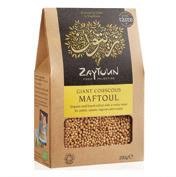Restore nature now
Marching for climate and nature
Saving UK fruit and veg
Our latest horticulture report
Finding naturefriendly solutions
Managing bracken with livestock in the Lake District





Restore nature now
Marching for climate and nature
Saving UK fruit and veg
Our latest horticulture report
Finding naturefriendly solutions
Managing bracken with livestock in the Lake District





Already, 2024 has been a big year for food and farming. Post the election, our policy team has been working hard to ensure that nature-friendly farming is at the top of the agenda, from creating green jobs in the organic farming sector to protecting the NHS by making sustainable and healthy food the norm. You can read more about this on p12.
We launched our Horticulture Report at Groundswell earlier this year, calling for the new Government to increase support for fruit and veg production in England. Only 2% of British farmland is used for fruit and veg – we want to see this doubled. You can learn why this is important on p16, along with our favourite veggie recipe on p20.
And of course, there’s much more in this issue of Living Earth, from the microorganisms present in healthy soils on p8, to debunking myths about organic on p22.
Finally, our AGM will be held online again this year to allow as many people as possible to attend. It will be held on Thursday 7th November from 7pm to 8:30pm. You can register for the event by calling 0300 330 0022, email us at memb@soilassociation.org, or register online at soilassociation.co/agm
I hope you enjoy this issue of Living Earth. As ever, please do get in touch with us with any comments or queries – we love hearing from you.

Helen Browning, CEO and organic farmer
The future of food and farming is looking brighter, and it’s all thanks to you, our wonderful members! Here are our recent highlights:



We have received nearly 30,000 signatures on our petition calling on UK governments to address the pollution caused by intensive poultry units, and we want to thank you all for your support.
And, thanks to over 3,000 of you writing to your local MP or Parliamentary Representative, questions have been raised in Parliament about the state of our rivers. We will be picking the campaign up with the new Government, we’ll be sure to keep you updated!
Just one teaspoon of neonicotinoids can kill a billion bees. So why was the Government continuing to approve it for ‘emergency use’ each year? Thanks to donations from our members, we are helping farmers to farm using nature-friendly principles and asking the government to stamp out this toxic policy.
Earlier this year, we attended the Restore Nature Now protest in London, where we called on politicians to take the climate and nature crisis seriously. It was a hugely powerful event, and we were lucky enough to meet some of you there!
Now, with the new Government in power, we are doing all we can to put food and farming on the agenda. You can read more about our manifesto asks on p13

Donate:
To everyone who made this possible, we can’t thank you enough.
Make a donation! As a charity, we rely on generous donations to run our campaigns. Would you like to support our work today?
Increase your monthly gift to the Soil Association:
Members like yourself are the lifeblood of the Soil Association. Your support means a lot, and even a small increase in your monthly gift to us will go a long way in amplifying your impact on our planet and the wildlife that relies upon it.
Leave a gift in your Will:
The best thing you can do to support a nature-friendly future is to include the Soil Association in your Will. There’s still so much more to be done and knowing we can rely on these special gifts in the future means we can continue protecting our natural world for future generations.
Request our Guide to Gifts in Wills to find out more.
If you’re interested in making an even bigger impact, please do phone us on 0300 330 0022 or pop us an email at memb@soilassociation.org

On Saturday 22nd June, over 350 environmental charities and groups marched through London to Parliament Square. Their message to all the UK’s political parties was simple – that they must Restore Nature Now.
This march, led by the presenter and environmentalist Chris Packham, is believed to have been the largest demonstration for climate and nature in history. The Soil Association team proudly participated, representing the importance of soil health in the fight for environmental sustainability.
We are calling on the new Government to take decisive action in five key areas to restore nature:
A pay rise for nature – double budgets for nature-friendly farming.
Make polluters pay – new rules to make polluters contribute to nature and climate recovery.
Make space for nature – expand and improve protected areas.
A right to a healthy environment – an Environmental Rights Bill to drive better decisions for nature.
Fair and effective climate action – increase home energy efficiency, support active travel and public transport, and replace fossil fuels with renewables.
We were thrilled to see nature-friendly farming recognized as essential for nature and climate restoration. And we’re so pleased that you, our lovely members, support us in this. 1 2 3 4 5

We are all water droplets but coming together we have formed an ocean of people, all wanting the same thing: to change the way we treat our land, woodlands, water, and air.
Here’s what the Soilie’s had to say about the march:


Sophie:
Maddy:
“It was an incredible experience to march alongside thousands of people standing up for our natural world. There were people representing each element – from our landscapes, rivers and oceans, to endangered wildlife species and climate justice. It’s wonderful to see what we can achieve when we all work together, as we must continue to do.”
Ellena:
“Being amongst fellow activists at the Restore Nature march really restored my faith in humanity. Seeing a sea of people from across the UK standing up for our natural world – it’s a powerful reminder that people do care and that organisations like Soil Association are so important in raising awareness and driving change.”
“It can sometimes feel like soil is a niche topic, but we were excited to see so many signs mentioning saving our soil and the creatures that call our soil home. The soil revolution is happening!”
Cathy:
“It was lovely to be part of such a huge groundswell of people all marching for climate and nature, sending a clear message to politicians. Our Government could not fail to notice and must act to protect our natural world.”



soil food web
350 years ago, a Dutch draper called Van Leeuwenhoek (pronounced van-LAY-ven-hook) invented a lens to study the finer details of his woven fabrics. After soaking the fabrics in rainwater and clay (to clean them) he noticed something unusual; something incredibly small. And it was moving! His fascination grew. He produced ever better lenses. And over time he described a wonderful array of microorganisms that he called ‘animacules’. Van Leeuwenhoek’s work gained recognition from the most prominent scientists of the day and today he is widely referred to as the Father of Microbiology.
But what was he looking at?
Van Leeuwenhoek had stumbled across bacteria, archaea, protozoans, algae, microarthropods, nematodes and fungi. Without realising it, he had discovered the soil food web, the incredibly rich, diverse, and integrated community that underpins life on Earth no less!
He never published his research, preferring simply to write letters containing his observations to the Royal Society.
How many are there and where did they come from?
In a teaspoon of healthy soil, it is estimated there are up to 5 billion bacteria and archaea, over a million protozoans, thousands of nematodes,
dozens of microarthropods and perhaps a kilometre of fungal hyphae. But where did they come from?
To answer this question, we need to travel back in time some 4 billion years and dive to the deepest parts of the ocean. It is thought that where the Earth’s tectonic plates were being stretched to breaking point, hot fluids rich in hydrogen, carbon, sulphur and iron spilled out onto the seabed. These minerals combined to form the basis of the first simple organic molecules. As molecules combined and began to replicate and reorganise, eventually single-celled organisms we call bacteria and archaea arose.
These microbes invented photosynthesis 3.5 billion years ago which oxygenated the atmosphere. Some 1.3 billion years later, organisms with complex cells (protozoan-type eukaryotes) evolved from symbiosis between anaerobic archaea and aerobic bacteria; these creatures are the common ancestor of all animals and fungi.
A second union involving aerobic eukaryotes and cyanobacteria happened 1.6 billion years ago creating green algae and organisms that would eventually become the precursors to land plants.
Finally, some 470 million years ago, green algae formed a union with fungi and the outcome was the embryophytes – the first true land plants such as liverworts, hornworts and mosses.

Modern genomic research is showing that the biological skills and tools required to exist as a land plant were provided by those incredible, tiny bioengineers and biogeochemists. It is more than symbiosis, it is ‘ingeniobiosis’ (ingenio = engineered, biosis = way of life).
What do the soil food web microorganisms do?
Bacteria and archaea have created a mind-boggling array of plantgrowth-promoting substances such as hormones, volatile organic compounds, vitamins, enzymes, antibiotics, and signalling compounds in reaction to harsh environmental conditions, or biotic stress such as insect attack. They fix and cycle carbon and nitrogen; and they make nutrients bioavailable to plants. In partnership with fungi, they give soil structure. Mycorrhizal fungi can also be thought of as miners shuttling water, macronutrients and essential trace elements to the roots they connect to.
The protozoans help to keep bacteria and archaea populations stable and in turn nematodes keep protozoan populations stable. The nematodes are preyed on by microarthropods. I call it the Soil Serengeti as the predator/prey relationships are extremely important in balancing the life in the soil; and all that natural predation and pooping is critical in supplying plants with ammonium.
How can you tell if your soil food web is not working if you don’t have a microscope. Well, the most obvious sign is stressed plants; they may show wilted or yellowing leaves, or insect nibbles, or infection. The most common cause is lack of food and water for the bacteria and fungi! And digging! Soil is a habitat, and these microorganisms need to eat and drink on a regular basis, and a stable home in order to support the rest of the soil food web in growing healthy, disease resistant and resilient plants.
The food I am talking about is carbon sugars from plant roots and some regular input of compost. So, if you have bare soil this is another sign of poor soil. Weeds are nature’s way of providing those carbon sugars if you don’t interplant!
Finally, if you have a dark chocolate brown, moist soil with plenty of roots and earthworms, then you can be assured the rest of the soil food web microbes are at home. But keep feeding and watering, little and often.
Eddie Bailey is a geologist and soil food web specialist
Learn more at a Rhizophyllia workshop – www.rhizophyllia.co.uk
David and Fiona Daley have been farming in the hills of the Lake District for over 30 years. The couple farmed the land conventionally for many years, but 7 years ago they began farming regeneratively.
As upland farmers, one of the main problems David and Fiona face in their regenerative system is controlling bracken, an invasive species of fern that is notoriously difficult to get rid of without the use of chemicals. Left to its own devices, the bracken takes over the land and livestock are left with no grass to feed on.
David and Fiona were determined to control the bracken using naturefriendly methods, so they’ve teamed up with the Soil Association’s Innovative Farmers programme and a group of fellow upland farmers to find the best solutions. A few meetings

later, a new Innovative Farmers field lab was launched – managing bracken with livestock.
Innovative Farmers is a Soil Association programme that connects farmers facing similar issues and works with them to test nature-friendly solutions that will help them on the ground.
The farmers will be feeding their livestock on bracken-covered areas, using the livestock to trample the bracken and encourage other plant species to grow in its place.

The aim of the field lab isn’t to remove bracken entirely, as it’s actually an important habitat for some invertebrates, birds, and plant species. But the habitat is most beneficial when broken up as part of a wider habitat mosaic, with patches of bracken amongst the grass, rather than a monoculture.
Each farmer in the group is testing a different approach to managing bracken with livestock. Most have chosen to use cattle to trample the ferns, but one farmer is testing using pigs instead of cattle! The idea being that the pigs will uproot the underground bracken rhizomes and have a more permanent impact.
A rhizome is an underground stem from which roots and shoots originate. They grow perpendicular, and once separated each piece of rhizome is capable of producing a new plant.
David and Fiona are ahead of the curve, having spent the last 7 years managing the bracken on their farm using their herd of Belted Galloway cows. In this time, they have successfully created a mosaic habitat that is allowing a range of species to regenerate.
Conventional farming felt like hard work. We were constantly fighting against nature rather than working with it. So, we took a break from farming and returned 7 years ago on the understanding that we would do it differently.
Fiona Daley
“We’ve loved seeing natural diversity return to the farm, from primroses and bog cotton to three species of orchids! Most excitingly though, we’ve seen carpets of violets popping up in the sunny areas bordering the bracken. This is ideal habitat for the endangered Fritillary butterflies, which are now thriving on the farm, and really highlights how important it is to have a variety of habitats.”
David and Fiona have also been pleased to see a variety of trees establishing themselves in the landscape, including oak, hawthorns and more. These trees are growing naturally in the spaces left by the bracken to create a wood pasture habitat, one of the rarest habitats in the UK and also one of the best for biodiversity.
It’s easy to see the positive impact bracken management has had on the farm, but habitat management takes time and dedication. It’s been 7 years of hard work for the couple, and lots more to come as they continue to work with Innovative Farmers to find the best solution.
We’ll be revisiting David and Fiona in a couple of years to see how they get on, so watch this space!

In this issue of Living Earth, we were lucky enough to interview Brendan Costelloe, Director of Policy at the Soil Association. Brendan joined the charity in October 2023 and has thrown himself into our work to transform food and farming.
In this article, we chat to Brendan about the influence charities have in government policy decisions, as well as what he’s up to post-election.
Hi Brendan, thanks for chatting to us today. To start, could you tell us a bit about yourself and how you came to be at the Soil Association?
I’ve always been passionate about the environment and studied conservation science at university before joining the RSPB’s policy team. I’ve been working in the political space now for about 15 years, both with environmental charities and for the Government as a non-political advisor to the Secretary of State with Defra, which I think gives me a well-rounded perspective of environmental politics.
Across all the areas that I’ve worked, it was very clear to me that fixing the food system is the most important thing we need to do to safeguard the future of our planet. And that’s why I joined the Soil Association, because we’re the leading, expert organisation working to fix it.
And what is the role of the policy team at the Soil Association?
The way we approach things often depends on how much the Government understands the issues we’re tackling. If the topic isn’t very well understood, our role is to raise awareness through campaigns like ‘Stop Killing Our Rivers’, which helped
raise awareness that the pollution originates from intensive poultry units.
But if the issue is well understood, we work with the Government to develop policies that work for farmers, the environment and the Government –which is the really hard part! If it was simple, we probably wouldn’t have the problem in the first place!
In terms of influencing government, it’s important to use framing that appeals to them and what they are trying to achieve. For example, it’s clear that the Government are keen to grow the economy as it’s been static for a long time, so we’re framing our asks around creating ‘green jobs’ in the naturefriendly farming industry.
Likewise, in the run-up to an election there’s always lots of understandable talk about the NHS, so we’re emphasising the fact that serving more healthy and sustainable food in schools, hospitals, etc, with the help of programmes like Food for Life Served Here - can really reduce the burden on the NHS caused by unhealthy diets.
So, would you say that fixing the food system is likely to be quite high in the new Government’s priorities?
I hope so! Post-Covid, with the costof-living crisis in the UK and a war in Ukraine, environmental issues like food and farming probably have gone down in the list of overall priorities. However, the general trend is good, and policies have definitely improved in recent years. Indeed, they will inherit a whole set of legally binding environmental targets. And given that public interest in environmental issues has grown so much, I’m optimistic that the next government will take food, farming and the environment as seriously as it needs to. If they don’t, the public will hold them to account!
Now that we have a new Government in power, what are the priorities for your team?
Initially, we’ll be focusing on building relationships with people in Government, which is really exciting as they are generally really receptive to new ideas at the beginning!
And we’ll be continuing to push our manifesto asks:
∞ Creating green jobs in naturefriendly farming
∞ Protecting the NHS by making healthy and sustainable food the norm
∞ Restore nature by improving farming methods
∞ End reliance on fossil-fuel based nitrogen fertilisers
∞ Make food prices fair for farmers and consumers
And finally, what do you wish people knew about the world of politics?
I think just how hard it is for the people in Government to solve some of these problems, and it’s often not for the want of trying! Humans naturally enjoy positive reinforcement, so more of that would help. The constant criticism can be counterproductive because it makes them wonder why they bother.
It’s easy to forget how far we’ve come, and awareness of food and farming has increased hugely over the last 10 years, as have budgets for environmental issues. We still have a long way to go, but things are getting better.

















One of our organic calendula fields
Some of our organic pr oducts
CHOOSE FROM OVER 80 PRODUCTS IN THE LARGEST RANGE OF ORGANIC SUPPLEMENTS
All e thic ally source d and Soil Asso cia tion cer tifie d.





The Soil Association’s recent policy report, produced in collaboration with Sustain and the Wildlife Trusts, explores the challenges of fruit and vegetable production in England and the impact this is having on public health. To tackle these issues, there are seven steps needed to help secure a sustainable future for our growers, our environment, and our communities.
Fruit and vegetables are the foundation of healthy and sustainable diets. Yet our growers are facing an unprecedented range of challenges –from rising production costs to limited labour availability, unpredictable weather conditions and low profit margins. As a result, almost half our country’s growers are worried they could go out of business in the next 12 months, as highlighted by Riverford’s recent #GetFairAboutFarming campaign. And this situation is also having ripple effects across the wider population, and our environment.
At a landscape level, fruit and veg production represents less than 2% of England’s farmed land, and production is declining year-on-year. As a country that is already heavily reliant on imports for fresh produce – producing less than a fifth of the fruit consumed domestically, and just over half of our vegetables – this presents a serious challenge for our food security. Recent global shocks have highlighted the fragility of a globalised food system, as illustrated by the shortages on supermarket shelves in January 2023.



33% of adults are eating the recommended 5-a-day

Meanwhile, domestic horticulture is facing its own environmental challenges. As it stands, a large proportion of UK vegetables are grown on carbon-rich peat soils which need to be restored from carbon emission sources to carbon sinks. In Eastern England, for example, the Fens are a major hub for celery, lettuce, onion and potato production. These peatlands have been drained for agricultural use since the 17th century – once drained, their fertile soil provides optimal conditions for arable farming and horticulture. However, the draining of peat soils has devastating impacts on the climate and nature emergencies, releasing vast amounts of carbon into the atmosphere and causing severe soil erosion. Maintaining current levels of vegetable production on this finite and precious resource is unsustainable –plans to expand horticulture to other parts of the country, and support for the sector throughout that transition, are urgently needed.
At a dietary level, a resilient supply of fresh fruit and vegetables is essential. With only 33% of adults eating the recommended 5-a-day, a shift to healthier and sustainable diets is desperately needed – the National Food Strategy recommended a 30% increase in fruit and vegetable consumption by 2032. How the UK government plans to support that
increase could have transformative benefits for the sector. In our new report, we call for the prioritisation of local and nature-friendly systems, like organic, to be developed across the country and transitioned away from lowland peat.

To help guide this shift, the report outlines seven steps to restore the resilience of our horticulture sector, boosting the production and consumption of fruit and vegetables in England. We call on UK government to:
Develop a cross-departmental approach to horticultural policy
Support a just transition towards farming on peat-free soils
Decentralise production and scale up agroecological horticulture
Improve supply chain fairness and flexibility
Harness the potential of public procurement
Boost urban and peri-urban horticulture
Invest in farmer-led research, collaboration, and innovation
To learn more about this vision, visit soilassociation.org/horticulture
We’ll be working with colleagues from the Wildlife Trust and Sustain to communicate these asks with the new UK government.


You can add your name to our campaign to save UK fruit and veg by visiting: soilassociation.co/veg_le



We’re delighted to welcome Flo back to another issue of Living Earth, this time to share her thoughts on green manures. Flo is Director of Sarratt Community Garden in Hertfordshire, but also leads the beloved Compost Club at Woodoaks Farm.
As the summer growing season draws to a close, it is easy to think that gardens are ‘done’ for the year, and that we will start again in the Spring. Nothing could be further from the truth – September, October and even November can be fundamental moments in the growing calendar. I sow copious salads in the autumn (though I am lucky enough to have a polytunnel to raise them in) and new fruit trees and perennials are, to my mind, best planted in November when they are dormant, but the soil still retains some warmth.
Vegetable beds can be left empty over the winter, but bare soil is unhappy soil, so why not take advantage of any winter warmth and sunlight to grow green manures? Green manures are fast-growing plants sown to cover bare soil. They improve soil quality by adding organic matter and nutrients to the soil, all the while feeding the soil food web, improving soil structure, and preventing run off and soil erosion. The combined result of this is a more fertile, carbon and nutrient rich soil that retains water when it is most needed in the following year.
Green manures are very unfussy – I literally throw down handfuls of seed and walk away – warm soil combined with wetter weather makes for a high germination rate, even accounting for hungry pigeons and mice. In soil, as in life, diversity is key, so I favour a diverse mixture of green manures all growing together, jostling for space, and providing subtly different benefits.
As
a person with a passion for pollinators, I lean towards those species that are attractive to insects once they flower, as well as providing all the soil benefits mentioned above.
Phacelia tanacetifolia is glorious if left to flower, as are buckwheat and fenugreek (though these two are killed by frosts so are best sown early). Mustards race away with deep taproots, and lupins, clovers and legumes form symbiotic relationships with nitrogen fixing bacteria, increasing the nitrate levels in the soil.
Green manures are traditionally dug or tilled into the soil before planting, which definitely makes for quicker
decomposition. However, this is incompatible with a no dig approach, which we follow in the Sarratt Community Garden, and is increasingly being adopted in both horti-and agriculture. We compromise by hoeing off top growth of reasonably small seedlings and leaving it to wilt on the surface, or by manually pulling or cutting larger plants if they have been allowed to mature and flower – the top growth is then composted or used as a green mulch round treasured perennials.
It is worth saying that any plant that germinates well can be used as a green manure – nasturtiums fulfil that purpose for us whilst still offering an edible and saleable crop, along with limnanthes douglasii and borage as a pollinator banquet. As a nonmechanical gardener, I have found the strongly rooted green manures too much to manage -these include Hungarian grazing rye, alfalfa (beware!) and to a certain extent the clovers. In an agricultural context they are fabulous, but for a volunteer run and machine free garden, they are just too tough.
I haven’t mentioned plants such as comfrey as they are used in a slightly different way – we’ll come back to that in a future issue!



This recipe uses organic broad beans and courgette, mixed with a chilli & mint dressing. It’s a delicious summer salad that is perfect as a side for barbecues.
Ingredients (serves 4-6)
• 2 courgettes (approx. 400g)
• 200g broad beans (podded weight)
• 6 tbsp olive oil
• 2 tbsp lemon juice
• 1 red chilli, deseeded & finely chopped
Method:
• small bunch of mint, leaves shredded
• 100g cooked & cooled spelt
• 2 spring onions, finely sliced
• 50g watercress sprigs
• 1 block feta cheese
1 Use a mandolin to slice the courgettes into thin, round slices.
2 Boil the broad beans for 3-5 mins, depending on size. Drain, plunge into a bowl of cold water to refresh, then drain again. If the beans are large, you could double pod them (peel off the outer skins to reveal the inner bright green bean), but don’t bother if they are small or you are short of time.
3 To make the dressing, whisk the olive oil and lemon juice together in a small bowl. Stir in the chilli and mint and season with salt and pepper.
4 Mix the spelt, courgette, broad beans and onion together in a serving bowl.
5 Add half the dressing and toss together. Toss the watercress in amongst the spelt and beans. Crumble over the feta. Drizzle over the dressing to serve.


















































The term ‘organic’ refers to a whole, holistic system of farming that is dedicated to working with nature rather than against it. Organic systems have huge potential when it comes to mitigating climate change and halting biodiversity loss, yet there are still so many misconceptions about what organic really means.
In this new series, we will be unpicking some of the myths around organic –first up, ‘organic can’t feed the world’.
Many critics of organic say that the reduced yields on organic farms mean that it just wouldn’t be able to feed the world. And there’s some truth in this. In organic systems, the yields are sometimes lower, but that doesn’t mean that organic can’t feed a growing population.
In fact, some estimates suggest that, using largely conventional farming methods, we are currently producing enough food to feed 10 billion people – it’s just the wrong sort of food, going to the wrong places or being wasted before it reaches our plates.
Today, much of the arable land in Europe is used for growing animal feed, with more than half of the cereal and oil crops currently grown in Europe being fed to pigs and chickens. If we freed up this land for human consumption, the drop in yield caused by organic systems would no longer be a problem.
It’s thought that switching to organic would reduce Europe’s agricultural emissions by 40-50%!
The ‘Ten Years for Agroecology in Europe’ report suggests that for organic to be able to feed the world, we must change our diet and eat less meat but better, allowing us to ‘grow food not feed’. This means consuming less grain-fed pork and chicken, and more plant-based proteins supplemented with grass-fed red meat.
But it’s not all about yield. Comparing yields in organic and conventional systems fails to consider the hidden costs of conventional farming.
There are so many benefits to transitioning to nature-friendly farming: phasing out pesticides means more biodiversity; eating more plants is beneficial for our health; and healthy soils store more carbon. There are so many other factors that indicate a healthy and secure food chain, yield is just one of them.

In a groundbreaking new partnership, the Soil Association charity is partnering with Ocado Retail, the world’s largest dedicated online supermarket, to drive positive change in the food and farming system.
This is the Soil Association’s largest corporate partnership to date, with ambitious objectives to develop naturefriendly farming practices through knowledge sharing, improve animal welfare conditions on farms, and by recruiting and training 60+ Farm to Fork Ambassadors who will be the voices of those working on the ground, to drive the sustainable food and farming movement.
With more than 1 million active customers and a longstanding interest in supporting local farmers and British produce, Ocado Retail is the perfect partner for us to drive widescale change in farming and healthy and sustainable diets. As a charity, we know that we can’t make the necessary changes by working alone. We need to work with powerful players from across the sector, as well as reaching out to citizens and influencing policy makers.
The idea of a ‘good life’ for farm animals comes from the Farm Animal Welfare Council, the government’s welfare advisors who defined three levels of welfare: a life not worth living, a life worth living and a good life. Most welfare standards concentrate on the bottom two tiers, for example banning confinement or removing the tips of hen’s beaks to reduce feather pecking.
But the Soil Association and Ocado Retail want to go one step further. We want farmed animals to live in good environments, and have a relaxed, fulfilling, and happy life. We want all farmed animals to have a good life, not just a life worth living.
With Ocado Retail’s support and in collaboration with (livestock) farmers, we’re going to set the bar for top tier animal welfare, supporting farmers who already meet this bar to share their stories and market their produce and encourage the industry to recognise the benefits of following suit. Working with a major retailer provides great opportunities, and we’re excited to be building the evidence for better animal welfare.
The Soil Association has always understood the value of learning networks and working together. So, we’re delighted to create 5 demonstration farms across the UK to share knowledge of nature-friendly farming principles
and help other farmers looking to adopt more sustainable methods of farming.
The farms will focus on different areas of farming, from dairy to grain crops, and meat to orchard fruit and vegetables. And the nature and climate friendly practices they demonstrate won’t just benefit the planet, they will have been tried and tested to ensure that they are practical and profitable for the farmers too.
As one of the only charities working across the entire food system, we want to use our unique position to amplify the diverse range of voices calling for change in the food and farming sector. With Ocado, we’re going to build a network of ‘Farm to Fork’ Ambassadors, that not only speak out and share their stories about the changes we need to see in farming, but in food and health as well.
The movement is already filled with outspoken farmers, chefs, activists, caterers, growers, and educators, who each have their own audiences and circles of influence. We want to amplify their messages, and channel this energy towards the shift that we need to see.
At the Soil Association, we know that we have ambitious aims. We want a fairer, and more sustainable food system for all, a world where happy animals and healthy soils feed the world, while the farmers are paid fairly for their work. Only by working with you our members, and in partnership with organisations like Ocado, can we achieve these goals.































Same Vodka New Bottle








Whilst many were celebrating at Glastonbury, the Soil Association team were at another festival – one where you can listen to worms under the ground, hear inspiring talks by revolutionary speakers, and dance to music at the ‘Earthworm Arms’ by Groove Armada frontman turned nature-friendly farmer, Andy Cato.
Groundswell is the UK’s largest independent regenerative agriculture festival, hosted by a farming family on their own site. In June, a team of 40 Soilies set out to represent the Soil Association and our mission, share our expertise in panel discussions and workshops, and to learn from others working towards a better future of food and farming.
Here, the team share their key takeaways:
Farms can be havens for biodiversity, if the space is made for it
Groundswell takes place on a working regenerative farm, and ‘safari’ tours showcased how simple changes – like restoring hedges –can have huge impacts for nature.
The team took great joy from the ‘dung beetle safari’, learning that a single cow can support up to two million insects a year through its cow pats, and these
will support species like horseshoe bats higher up the food chain. Dung beetles can keep livestock healthier, by burying dung, and reducing parasite infections. However, they’re at risk from intensive farming practices such as the overuse of antibiotics, something that the Soil Association has long campaigned on with the Alliance to Save our Antibiotics.
These small but mighty beetles are a reminder that farming together with nature is key for building resilience on farms.


Fixing our food and farming systems will be vital for addressing the UK’s health crisis
The festival’s underlying thread was the interconnection between food, farming and human health. Polly Baldwin shared that chefs, nutritionists and growers form the ‘Golden Triangle’ of good food. Chefs and nutritionists need to understand the importance of healthy soils, whilst growers should be empowered to unlock the health potential of their produce. Soil has a vital role to play - Dr Jenny Goodman stressed that “you can be eating all the right stuff, but if the soil is depleted you won’t get the right nutrients”.
Obesity issues cost the NHS up to £6.5 billion every year - to address this crisis, we must start looking at the root cause. There needs to be collaboration along the whole chain – from farm to fork – to ensure healthy, sustainable and nutrient-dense food is accessible to all.
We cannot meet our net zero targets without farmers
The vital importance of soil health underscored the entire festival. Peter Byck’s documentary ‘Roots so Deep’ highlighted how we need to take a holistic approach to greenhouse gas emissions, and another panel suggested we have ‘carbon tunnel vision’ and called for recognition of the wider benefits of agriculture and ‘ecosystem services’ that farmers and growers can provide.
The need to update agricultural education was stressed, with Byck highlighting that agricultural colleges are still teaching the same stuff they were 40 years ago.
The Soil Association team were delighted to see the growing emphasis on soil health play out in real time, with farmers and growers from all sorts of backgrounds visiting our tent to learn more.

There’s a wide variety of food you can forage here in Britain, and late summer is the perfect time to start! The countryside is filled with delicious berries and nuts. Here’s what’s in season and how to eat it!
Blackberries are a favourite for those new to foraging, and picking blackberries is deeply embedded in British history and folklore. They can be found in parks, fields and woodlands across the UK.
Use them to make a comforting blackberry and apple crumble, or a jam.
Elderberries are easily recognisable for their dark purple colour and cluster formation. The raw berries are mildly toxic, so be sure to cook them before consuming.
Elderberries are packed with vitamins and are commonly used to make cordial. Drink the cordial throughout winter to avoid colds.
Make sure you leave plenty of food for the squirrels, birds, and other creatures who rely on this crop to survive the winter.
Crab apples are the UK’s native apple tree, and much smaller than any apple you can buy in the supermarket. The raw fruit is often sour but turns to a reddish colour when ready to harvest, and it’s thought the name is derived from the word ‘crabbed’, referring to its inferior, sour taste.
The apples make a lovely crab-apple jelly that can be eaten with bread or meat.
Sloe berries are large, blue-black berries. Usually very tart and acidic!
Sloe gin is often given as a Christmas present, and traditionally you would wait until after the first frost so that the frost splits the skins and releases the juice. But you can freeze the berries for the same effect.
Rosehips are often found in hedgerows, with bright orange-red fruit. Their inner hairs are known as ‘itching power’ so be sure to remove these before using!
Rosehips are full of antioxidants and vitamin C and can help to support a healthy immune system. Like elderberry, this fruit is often made into a syrup for use over the winter months.
Ripe hazelnuts can be difficult to find as they are popular with squirrels! You’ll know they are ripe when the leaves begin to turn yellow.
The nuts can be eaten raw after removing the outer shell or roasted in the oven.
Always be sure you can positively identify any plant before you pick it, and never eat a plant you are unsure of.
The Forager’s Calendar: A Seasonal Guide to Nature’s Wild Harvests
John Wright

To accompany our late summer foraging article, you may wish to take a deeper dive into the world of wild food. John Wright is a forager at River Cottage and has decades of experience in foraging.
His book, ‘The Forager’s Calendar: A Seasonal Guide to Nature’s Wild Harvests’, is a beautiful guide to the produce available on your doorstep. From dandelions to sloe berries, wild garlic, samphire or chanterelles. Our countryside is full of delights!
Month by month, John shows us what species can be found where, how to
identify them, and how to store, use and cook them.
The book is fully illustrated, with tips on kit, conservation advice, and importantly what to avoid! A gorgeous book for anyone looking to get into foraging, or even for those just interested in learning more about British plants!
If you’re enjoying our book recommendations, or would like to share any book ideas, please do get in touch! We’re always happy to hear from our readers, so please do share any books you’ve read that have changed the way you think about your food, farming or the natural world.
Email: memb@soilassociation.org



At UpCircle, we upcycle leftover natural ingredients into high performance awardwinning face, body and haircare products.


Every single product we make rescues and reuses a different skin-loving natural ingredient from varied industries across the globe, like olive stones from the Mediterranean and coffee grounds from London cafés.
Our formulations are dermatologist approved and you can send your empty jars back to us for sterilising and refilling, at a 20% discount.
From Eye Creams and Body Creams to Shampoo and Candles, our wide range of beauty products is suitable for all ages and all skin types.
Our products are better, all round.













































































































































































































































































































































































































